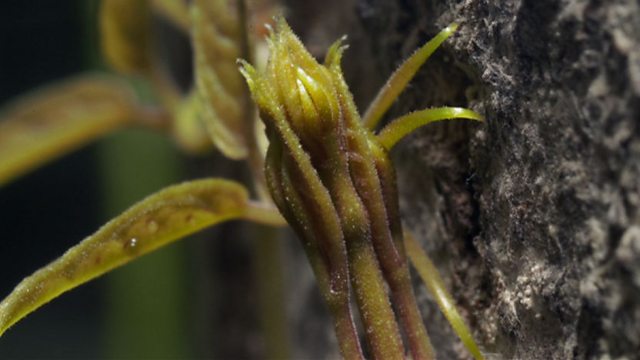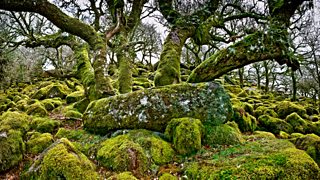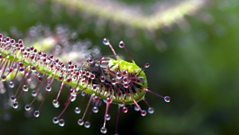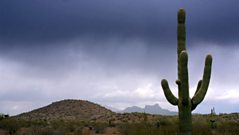
Climbing plants
Plants on the forest floor are too far away from the essential light source 50 metres up in the canopy, but they needn't be passive. If the light won't come to them, they can go to the light; they need to climb.
It's much easier to use another plant as scaffolding, but they won't get very high unless they can hold on tight. Like fingertips searching for a hold, the adhesive pads of an ivy grips the bark. Instead of sticking to the trees, some climbers use sharp 'claws' that hook into the crevices and hauling the plant to the top. With every metre, the light gets stronger and fuels more growth.
A passionflower tendril seems to flail in mid-air, but in fact it's searching for an anchor point. Its tendril coils on itself pulling the plant towards its support. In a matter of days, these climbers make it to the canopy and with light in plentiful supply are able to flower.
Duration:
This clip is from
Featured in...
![]()
Playing with Time
A collection of clips showing the best in timelapse nature films.
![]()
The Wildlife of Life
Discover the wildlife of the Life series.
More clips from Plants
-
![]()
Woodland timelapse
Duration: 04:14
-
![]()
Woodland timelapse
Duration: 01:04
-
![]()
Meat-eating plants
Duration: 02:22
-
![]()
Sizing up saquaros
Duration: 02:31
More clips from Life
-
![]()
Woodland timelapse—Plants
Duration: 04:14
-
![]()
Woodland timelapse—Plants
Duration: 01:04
-
![]()
Partners for life—Birds
Duration: 02:22
-
![]()
Dancing dragons—Fish
Duration: 03:57








